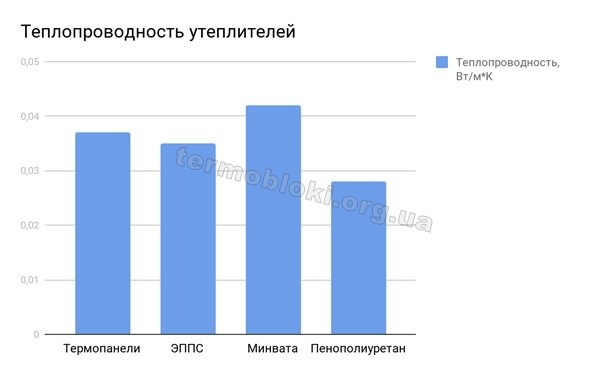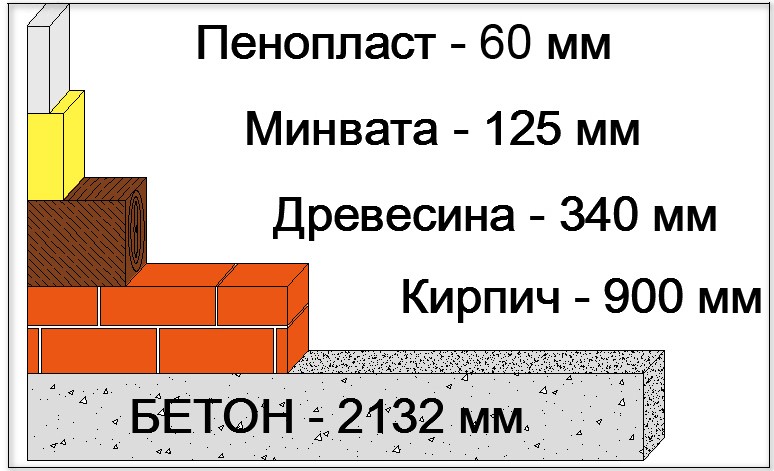Thanks to its features, thermal panels perfectly retain heat in the house. Consider exactly what the characteristics of our product will reduce your heating bills, and why thermal insulation of thermal panels is better than the properties of other materials.
If we compare the coefficients of thermal conductivity, all insulation alternatives are good:

But the thermal insulation performance of each material can greatly depend on the operating conditions. In addition, thermal conductivity cannot be considered in isolation from other characteristics of the insulation.
Closed-cell polyurethane foam is the best insulation in terms of thermal insulation, moreover, it can be sprayed onto any surface. In terms of moisture resistance and vapor permeability, it is comparable to polystyrene foam, and also collapses under the influence of direct sunlight.
But due to the roughness of the resulting peel, polyurethane foam is more difficult to protect with a finish, and therefore it is more often used inside buildings (roofing) than outside. Due to tight adhesion to the wall and its seamlessness, questions arise regarding vapor permeability and fire safety – polyurethane foam will not burn, but will smolder, emitting hazardous substances. For the same reason, it is difficult to dismantle it, and, to top it off, polyurethane foam is several times more expensive.
Листы ЭППС также обладают чуть более низким коэффициентом теплопроводности, чем ППС. Благодаря своей структуре и гидрофобности, экструдированный пенополистирол прекрасно работает в качестве теплоизолятора в местах, подверженных повышенной влажности и давлению. Например, им утепляют фундамент.
Однако, использовать его для теплоизоляции фасадов специалисты не советуют. При отсутствии качественной вентиляции, нулевая паропроницаемость материала будет способствовать повышенной влажности в помещении со всеми вытекающими из этого последствиями. Кроме того, ЭППС хуже дружит с отделочными материалами, поэтому чаще наблюдается явление отслоившегося фасада. Как это происходит, вы можете посмотреть на видео, на нашем ютуб-канале.
Mineral wool has a slightly higher thermal conductivity than expanded polystyrene, but it is also a good heat insulator. Some types of basalt wool are non-combustible, therefore, they insulate openings.
However, mineral wool is quite hygroscopic: over time, gaining moisture, they lose 30-40% of their thermal insulation properties. Stone wool is denser, therefore it better resists dampness and retains its characteristics of a heat insulator longer. But, in any case, for cotton wool to work, additional moisture and vapor barrier are required. And on the second side of the scale lies health, because microparticles of building wool fibers are dangerous for breathing and skin. Comparison of the thermal insulation properties of expanded polystyrene, from which the thermal panel and mineral wool are made, you can see in the video below:
When comparing thermal insulation characteristics in combination with other properties of different heaters, it is obvious that thermal panels is not only a highly efficient heat insulator, but also an optimal one a choice of alternatives.
